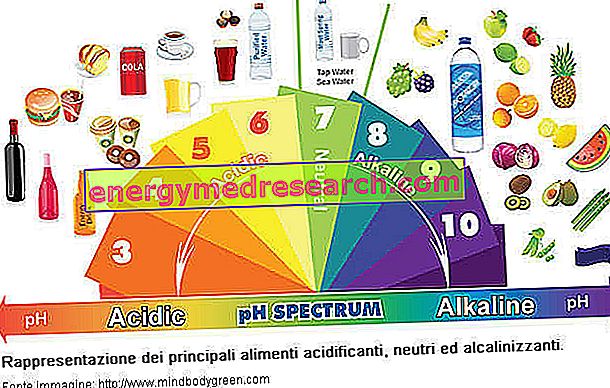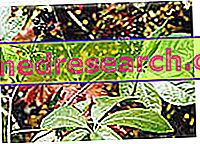What is the PRAL?
PRAL literally means Potential Renal Acid Load, which is renal acid loading potential .
PRAL is a scientifically validated method, proposed by Remer and Manz, frequently used to calculate the chemical balance of acidifying and alkalizing molecules of a food or a supplement. The PRAL does not simply establish the pH of a compound (which can easily be measured by other methods), but estimates its relative ability to interact with human blood (in the pH range compatible with life: 7.38-7.42).
Simplifying, the PRAL determines the chemical acid-base effect of a compound on the human organism, naturally absorbable and metabolizable by the healthy and functioning digestive system.

PRAL variables
For the estimation, the PRAL takes into consideration the variables of:
- Total proteins
- Sulfur of sulfur amino acids
- Phosphorus (P)
- Potassium (K)
- Magnesium (Mg)
- Calcium (Ca)
present in the food, e
- The production of endogenous acids and bases with respect to the content of the individual minerals and amino acids involved.
NB : the PRAL is not the only system of evaluation of the chemical-nutritional impact, there is also another one called ashes analysis; this technique is based on the DIRECT measurement of the alkalizing mineral salts present in a food residue following its combustion (only estimate the pH and does not take into account the metabolic impact).
From a practical point of view, products with negative PRAL (PRAL -) are potentially alkalizing (eg vegetables and fruits), while foods with positive PRAL (PRAL +) have an acidifying effect (eg meat, milk derivatives, fish and egg yolk).
The elements that determine the positive PRAL, therefore the lowering of the blood pH are predominantly sulfur (S) and phosphorus (P); on the contrary, the elements that determine the negative PRAL and raise the blood pH are: magnesium (Mg), potassium (K) and calcium (Ca).
Impact of blood pH, therefore of food PRAL, on the body: osteoporosis
Foods with PRAL + significantly increase the presence of hydrogen ions in the blood (H +) and Net Acid Excretion (NAE - Net Acid Excretion), which is the parameter that correlates to the elimination of calcium with urine (urinary excretion of calcium) ; this mechanism is very fundamental in the evaluation of a healthy and balanced diet, especially when we examine some subjects at high risk of osteoporosis (women, elderly, those who are familiar with osteoporosis, ex rachitici etc.). In fact, the urinary excretion of calcium favors the depletion of skeletal density "regardless of the nutritional intake of this mineral", thus raising the risk index for the onset of osteoporosis in old age.
It follows that, in order to obtain a balanced diet, it is essential to ALWAYS associate alkalizing foods with foods with PRAL + (or supplements, eg protein powders), with the aim of counteracting the lowering of blood pH and avoiding l possibility of an increase in NAE and urinary excretion of calcium.
Recognize alkalizing foods
The alkalizing foods are mainly fruits, vegetables, legumes and whole grains (not refined); below is a brief table illustrating potentially alkalizing foods (blue ones with PRAL <-10), and the few exceptions of the two groups (highlighted in red):
| Food | PRAL |
| Vegetables and legumes | |
| Garlic | -1.7 |
| Asparagus | -0.4 |
| Broccoli | -1.2 |
| Carrot | -4.9 |
| Cauliflower | -4.0 |
| Brussels sprouts | -4.5 |
| Cucumber | -0.8 |
| Onion | -2.5 |
| Green beans | -3.1 |
| Fennel | -7.9 |
| mushrooms | -1.4 |
| Lettuce | -2.5 |
| Lentils | +3.5 |
| Aubergine | -3.4 |
| Potato | -4.0 |
| peas | +1.2 |
| Tomato | -3.1 |
| Rocket salad | -7.5 |
| Celery | -5.2 |
| Soy | -3.4 |
| Soy, milk | -0.8 |
| spinach | -14 |
| zucchini | -4.6 |
| Fruit | |
| Apricot | -4.8 |
| Pineapple | -2.7 |
| Orange, juice | -2.9 |
| Banana | -5.5 |
| Dried figs | -18.1 |
| Kiwi | -4.1 |
| Lemon | -2.6 |
| Apple | -2.2 |
| Pear | -2.9 |
| Grapefruit | -3.5 |
| Currant | -6.5 |
| Grapes | -3.9 |
| Raisins | -21 |
Calculate Online the PRAL of your diet »



